2.1 Introduction
There have not been any formal studies that address the development of invasion science in South Africa, but in 1982 Moran and Moran (1982) published a bibliography of historical publications about invasive alien plants in natural and semi-natural environments in this country. Their search covered the period from 1830 up to and including 1982 and had a focus on publications dealing with the ecology and biology of alien plant species; references to taxonomic papers and to agricultural weeds or native plants were not included. The bibliography lists 457 publications, one dating back to 1858 (implying that there were no publications in this field in South Africa between 1830 and 1858); the 1858 paper was simply a list that included some alien plants in the Cape Town botanical garden (McGibbon 1858). Bolus (1886) made passing reference to potentially invasive plants in his lists of South African flora, but it seems that the first research- or ecology-based report on an invasive plant species in South Africa was that by Fischer (1888) who dealt with Opuntia ficus-indica (Mission Prickly Pear) and cochineal insects (Dactylopiidae). This was followed by a spate of papers over the next 50 years that were overwhelmingly dominated by reports that addressed the problem of O. ficus-indica, and then later dealt also with Opuntia aurantiaca (Jointed Cactus).
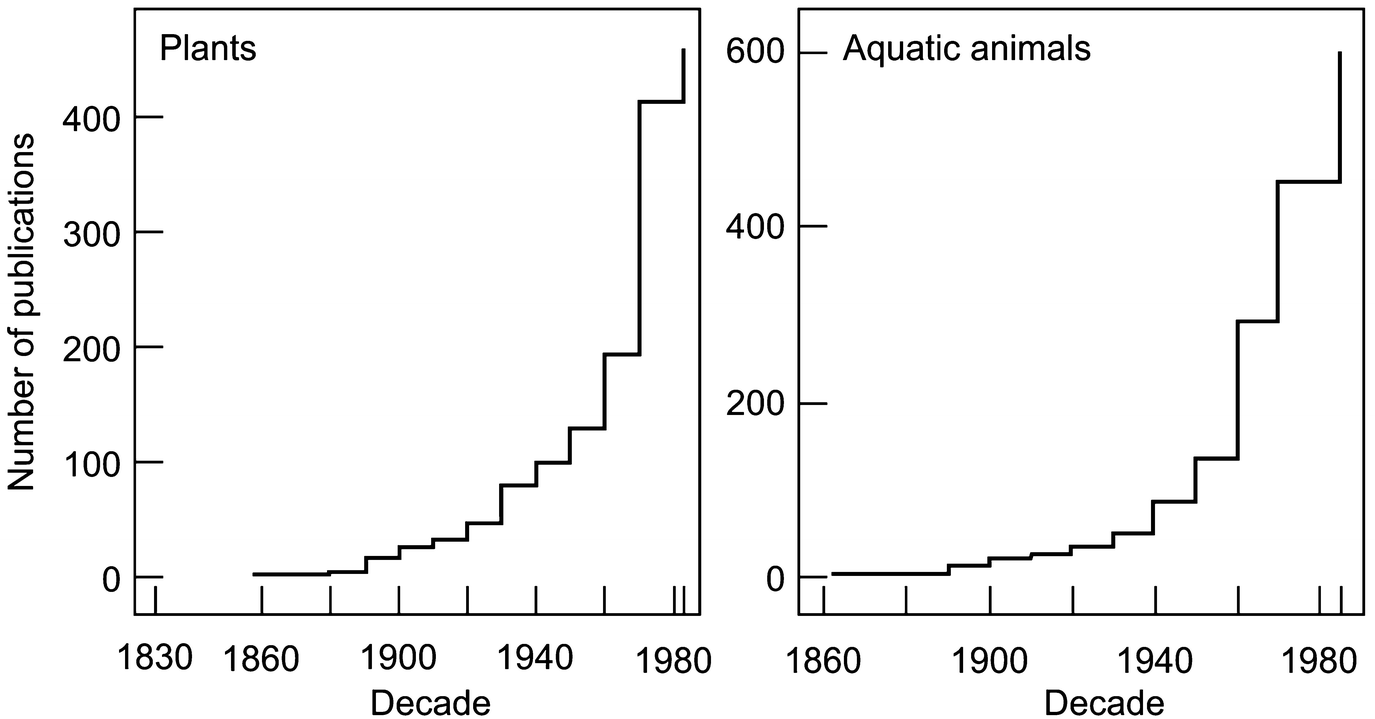
The cumulative number of published studies related to biological invasions per decade up to the late 1980s. Data for plants are from Moran and Moran (1982) for the period 1830 and 1982, and data for aquatic animals are from Bruton and Merron (1985) for the period 1859 and 1985. See Sect. 30.3.1 in Richardson et al. (2020) for details of publications from the Centre for Invasion Biology
In 1985, Bruton and Merron (1985) published a similar bibliography of alien and translocated aquatic animals in southern Africa. This bibliography listed 582 publications dating back to 1859, with a marked increase in publications from the 1960s onwards (Fig. 2.1). The bulk of these publications (466) were about fish, with invertebrates (65 papers) and birds (41 papers) also receiving attention. By far the most attention was paid to trout (genus Salmo, 262 papers), with carp (genus Cyprinus), bass (genus Micropterus) and bluegills (genus Lepomis), respectively, each with over 100 listed papers. It is clear from this bibliography that early science in the field was concerned with acclimatising and establishing alien fish species, rather than with their spread and potentially negative impacts . During this early period, the most prolific author was A.C. Harrison . Harrison was a fisheries officer with the Cape Provincial Administration for over 40 years, and between 1934 and 1982 he published at least 81 papers (many more were published by him as an anonymous author, Bruton and Merron 1985). In a tribute to Harrison after his death, Dr. Douglas Hey (former director of the Cape Provincial Nature Conservation Department) recalled that “he and I travelled many thousands of miles together, surveying and stocking inland waters” (Hey 1981). Hey also noted that “today the introduction of alien species is not favoured, but it must be remembered that in those days Nature Conservation was still an unknown concept, and the sole objective of the provincial service was to improve angling”.
Bruton and Merron’s (1985) bibliography of aquatic alien animals also lists four marine alien species, noting that “this aspect has received little attention and more invasive [marine] species may be found in future”. Work on marine alien species only began in the early 1990s, when Prof. Charles Griffiths of the University of Cape Town compiled a list of 15 known marine alien species in South Africa at that time (Griffiths et al. 1992). Research on marine bio-invasions in South Africa is therefore relatively recent (Griffiths et al. 2009), and has been characterised by a rapid rate of discovery of introductions. Griffiths’ former PhD student, Dr. T.B. (Tammy) Robinson reports elsewhere in this volume that 95 marine alien species are now known from the South African coast, of which 56 have spread from their points of introduction to become invasive (Robinson et al. 2020, Chap. 9).
In this chapter, I provide a synopsis of the historical development of invasion science in South Africa over the past 130 years. For the purposes of this chapter, invasion science is considered to be “the full spectrum of fields of enquiry that addresses issues pertaining to alien species and biological invasions, [and embracing] invasion ecology, but increasingly involving non-biological lines of enquiry, including economics, ethics, sociology, and inter- and transdisciplinary studies” ( Richardson et al. 2011). This spectrum covers various stages of invasion (from pre-introduction through to naturalisation, expansion and dominance), and includes invasion patterns and processes as well as management and remediation (van Wilgen et al. 2014).
The account is centred on idiosyncratically-chosen and divergent initiatives and programmes that ran, often concurrently, in the twentieth century and beyond, and that are dealt with in chronological order according to the date of their inception. The overviews are selective, but they cover, in my opinion, the most important contributions that have been made to invasion science , and the people that have made them. This chapter focusses on invasion science in South Africa, i.e. scientific studies relating to alien species and biological invasions, and it does not cover the history of introductions of alien species themselves, as this is covered elsewhere in this book (Faulkner et al. 2020, Chap. 12). There has been legislation of aspects of the problem in South Africa since 1861, and the development of policy and legislation in this regard is also covered elsewhere in this book (Lukey and Hall 2020, Chap. 18). My focus here is also restricted to studies that relate to alien species and does not include studies of native species that have spread, for example bush encroachment by native trees and shrubs, or range expansion by native animals. Finally, this account is restricted to studies of alien species that invade natural ecosystems and does not address weeds or pests of agricultural systems.
2.2 Biological Control of Invasive Plants: Research and Implementation 1913–Present
The practice of controlling invasive alien plants by using host-specific insects, mites or pathogens from the target plants’ native range has a long history in South Africa , starting with the introduction in 1913 of the cochineal insect Dactylopius ceylonicus as a biological control agent against Opuntia monacantha (Drooping Prickly Pear). At the time, the cactus was highly invasive along the coast from the Western Cape to Durban (Lounsbury 1915; Moran et al. 2013). This was followed by further projects that sought to control other invasive cacti in South Africa in the 1930s. However, it was not until the late 1960s that attempts to locate, introduce and establish biological control agents on alien plants that invaded natural ecosystems began in earnest. There have been many notable successes, and the latest assessment ( van Wilgen and Wilson 2018) shows that biological control agents have been established on 60 invasive alien plant species in South Africa, with 15 alien plant species now under complete control, with a further 19 species under a substantial degree of control (see also Zachariades et al. 2017; Hill et al. 2020, Chap. 19). Today, biological control is practiced in over 90 countries worldwide, with South Africa being one of five nations that have been at the forefront of development in this field (the others are Australia, Canada, New Zealand and the United States of America; Moran and Hoffmann 2015).
2.2.1 Biological Control Research at the Plant Protection Research Institute

Dr David Paul Annecke , widely regarded as the founder of recent research initiatives (from the early 1960s) on invasive alien plant biological control in South Africa. Photo courtesy of the National Collection of Insects, PPRI
One of Annecke’s first initiatives was to select a small group from the PPRI to re-start alien plant biological control research and implementation in South Africa. He perceptively chose Stefan Neser , and then later, Helmuth Zimmermann and Carina Cilliers, as his core group. Neser completed his PhD from the Australian National University in 1968, where he was mostly interested in potential biological control agents for use against Hakea shrubs. Neser rapidly became known as an explorer and naturalist extraordinaire—if Annecke was the founder of plant biological control in this country, Neser was the undisputed catalyst for much that happened in this field in South Africa from the 1960s onwards. He discovered scores of new species and genera of plant-feeding insects and pathogens , and discovered more than 100 new species of mites, and is still discovering new species. In 1986, he won the Dave Annecke Award from the South African Weed Science Society, and in 1994 the Senior Captain Scott Medal for his outstanding research contributions to biological control science.
Helmuth Zimmermann obtained a PhD degree at Rhodes University, graduating in 1980. In 1968, he joined the staff of the PPRI, and was sent to Argentina (1969–1973) to study the natural insect enemies of invasive cacti of South American origin. In 1992, he became the Division Manager of Weed Research at the PPRI. When the South African government initiated the Working for Water programme in 1995 (hereafter WfW , see Sect. 2.10), Zimmermann approached WfW’s Steering Committee, outlining the available expertise in biological control, and stressing the importance of the approach. As a result, WfW generously funded (and continues to fund) research into biological control. The situation was later summarised by Zimmermann et al. (2004) as follows: “There is little doubt, in retrospect, that if it had not been for the active intervention of Working for Water, the practice of weed biological control in South Africa would have languished, perhaps almost stopped. Invasive alien plant biological control research and support personnel at the PPRI are beleaguered by numerous regulatory, political and financial restraints, but the funding and support from Working for Water has at least stabilised the situation, and, in many respects, has invigorated the practice”.
Carina Cilliers obtained her undergraduate degree from the University of Pretoria , and initially worked on the biological control of pests of cotton and citrus. Following a sabbatical in Australia in 1974, she focussed her efforts on the biological control of alien plants invading natural ecosystems. She was responsible for the introduction of 16 species of natural enemies on Lantana camara (Lantana), six of which established, substantially reducing the invasiveness of this species. The evaluation of the effect of the insects on Lantana earned her a PhD from Rhodes University in 1982. After 1985, her research centred on controlling several invasive alien aquatic plant species. She was responsible for introducing successful biological control agents against Salvinia molesta (Kariba Weed) and Pistia stratiotes (Water Lettuce). She worked towards developing an integrated control project for water hyacinth locally, where “the most difficult part … was to win over successive managers to giving biological control a fair chance” (Anon. 2005). She has received several awards for her work, including the Dave Annecke Award from the South African Weed Science Society.
Following Annecke’s death in 1981, research continued at the PPRI, and the role of academic mentor in the field was adopted by Prof. Vincent C. (Cliff) Moran (van de Venter 1999). Moran’s interests in biological control were aroused by Annecke in 1972, while Moran was a lecturer in entomology at Rhodes University. Moran went on to become Dean of Science at Rhodes in 1983, and then Dean of Science at the University of Cape Town in 1986. Despite the demands of these posts, he remained active in the field of biological control. He always insisted that South African invasion scientists should conform to the highest international standards, and his role in ensuring that South Africa became one of the leading nations in the field of invasive alien plant biological control has been pivotal (van de Venter 1999).
The plant biological control community (as it refers to itself) has, since 1973, held annual meetings to discuss issues relating to their work. The first meeting, convened by Moran at Rhodes University, was attended by five people. These meetings have expanded in size over time both in terms of attendees and topic. By 2016 the meeting had split in two, with an annual symposium on all aspects of biological invasions in South Africa, hosting over 150 delegates, and a continuation of the biological control technical meeting that was smaller and much more focussed. This escalation in participants is regarded as a tribute to the involvement of WfW , which has been a staunch supporter of invasive plant biological control (Moran et al. 2013). The biological control research community has also produced regular comprehensive reviews of biological control projects in South Africa (Hoffmann 1991; Olckers and Hill 1999; Moran et al. 2011).
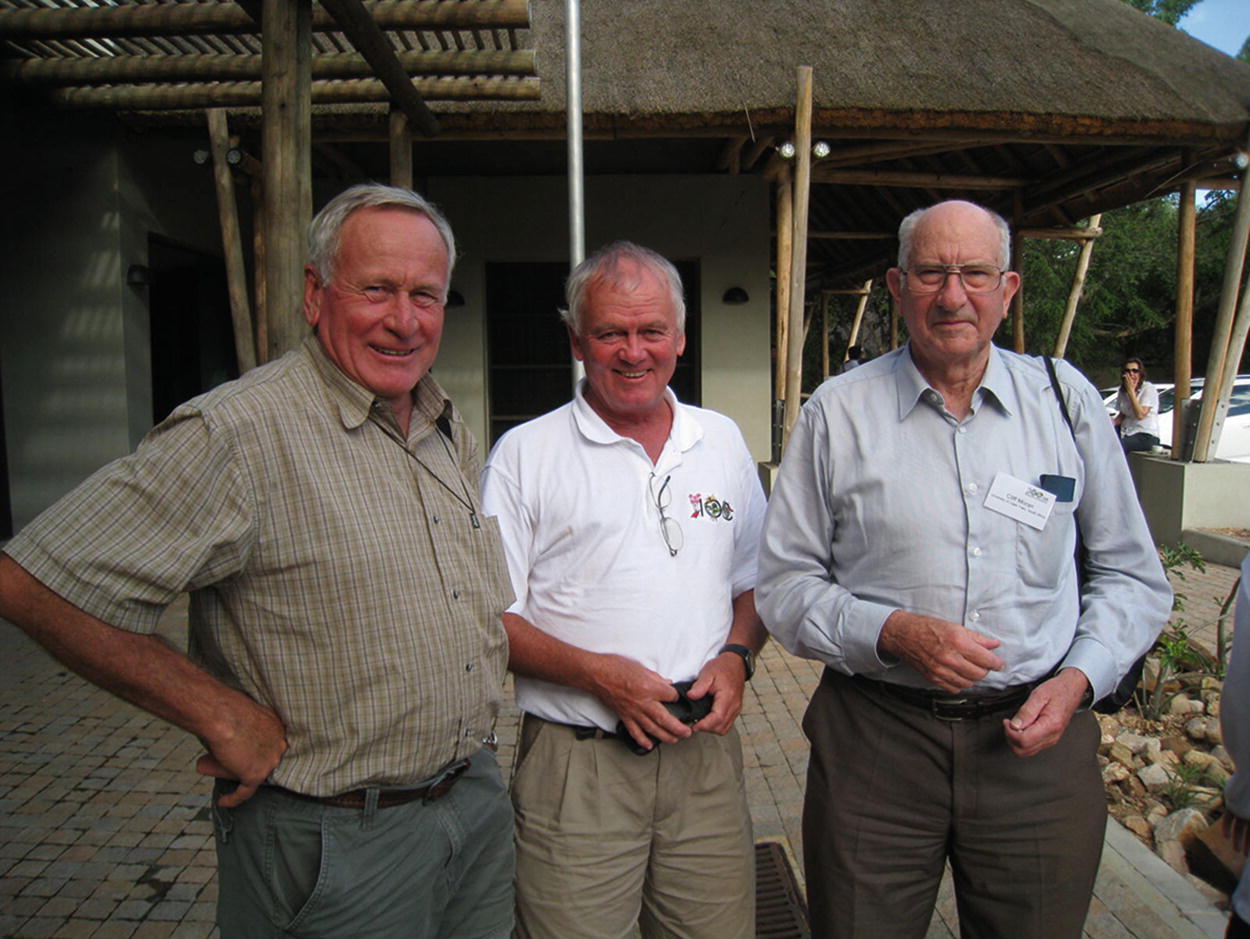
Helmuth Zimmermann , John Hoffmann and Cliff Moran (left-right) at the XIV International Symposium on Biological Control of Weeds in 2014. The meeting, held in Skukuza, Kruger National Park to mark 100 years of invasive alien plant biological control in South Africa, was attended by 154 delegates representing all continents except Antarctica. Photograph courtesy of John Hoffmann
2.2.2 Establishment of the Centre for Biological Control
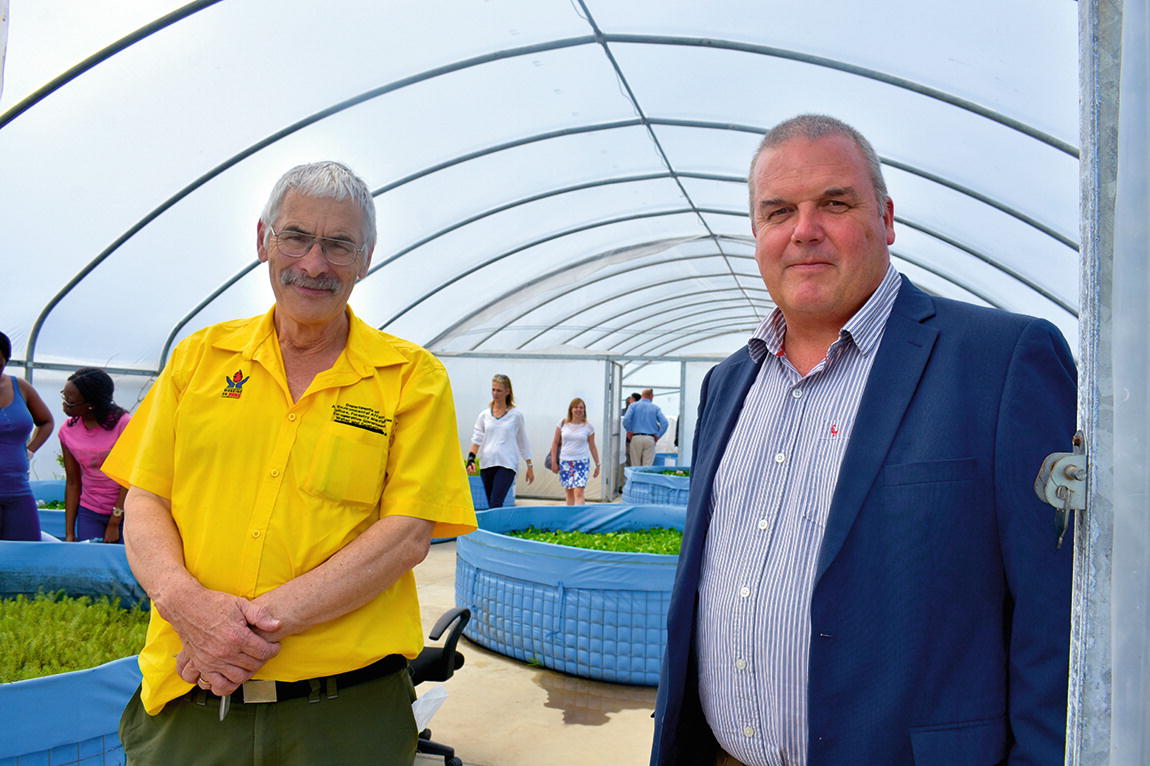
Guy Preston , Deputy Director-General in the Department of Environmental Affairs and leader of the Working for Water programme since its inception in 1995, with Martin Hill (Rhodes University) at the mass-rearing facilities for biological control agents, during the launch of the Centre for Biological Control in November 2017. Photograph courtesy of the Centre for Biological Control, Rhodes University
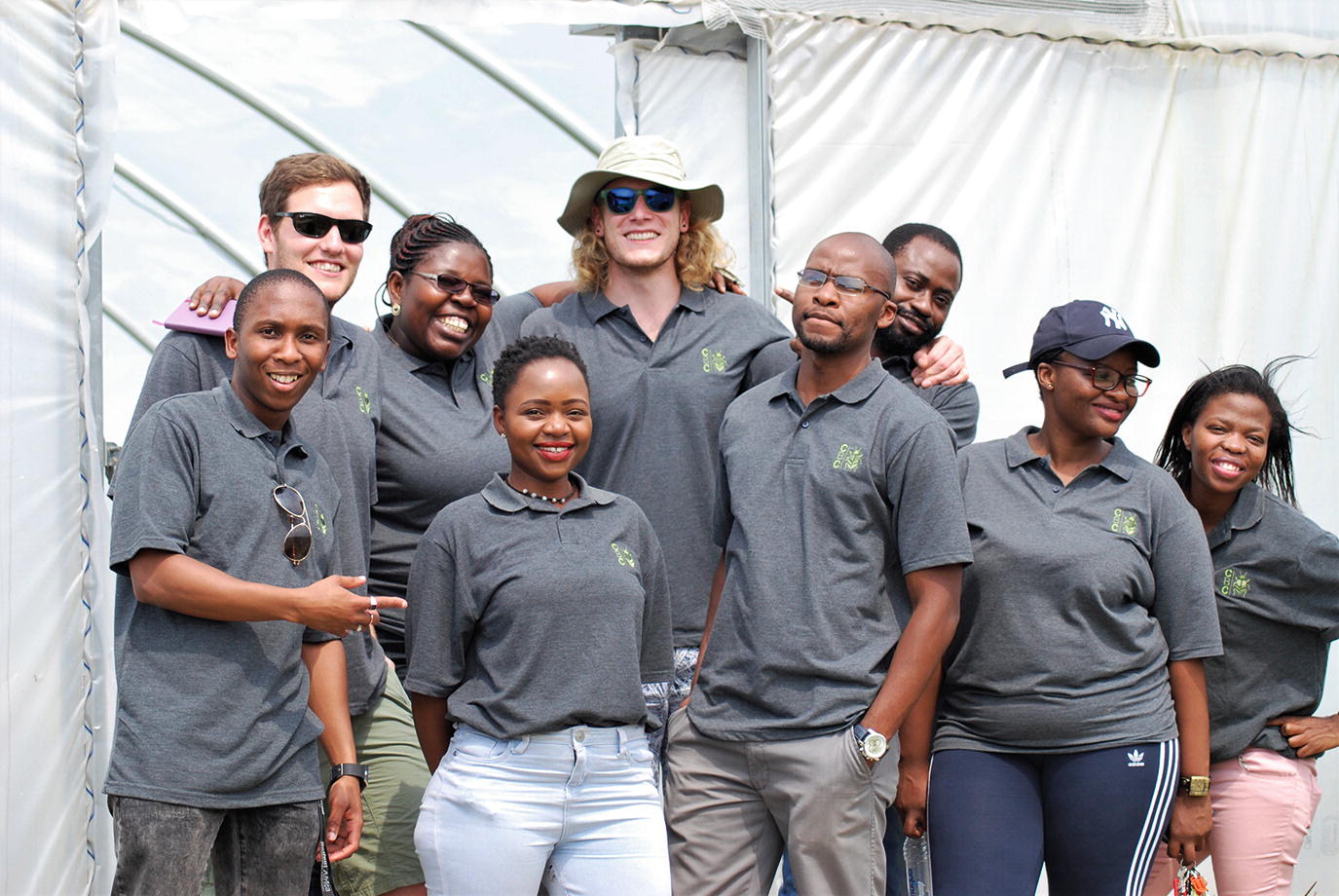
Post-graduate students at the Centre for Biological Control, Rhodes University (from left to right: Sandiso Nguni, Guy Sutton, Sonia Kenfack-Voukeng, Thifhelimbilu Mulateli, Ben Miller, Zolile Maseko, Ikponmwosa Egbon, Sinoxolo Nombewu and Lumka Mdodana). Photograph courtesy of the Centre for Biological Control, Rhodes University
2.3 The South African Forestry Research Institute (1936–1990)
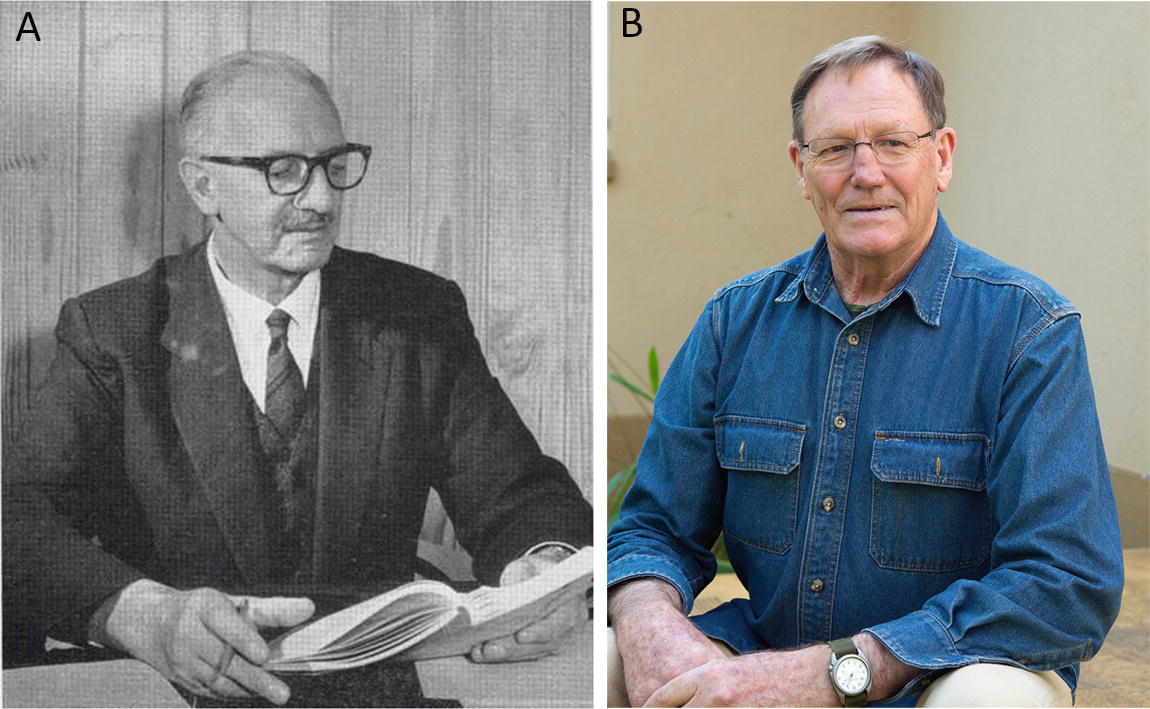
Christiaan L. Wicht (a) was responsible for the initiation of long-term ecological studies at Jonkershoek in 1936. The studies, funded by the Department of Forestry for over half a century, were later continued and expanded by Frederick J. Kruger (b) between 1977 and 1990. Photographs courtesy of: (a) Archives of CSIR Natural Resources and the Environment, Stellenbosch; (b) Laurence Kruger
Richardson studied for his MSc and PhD degrees under the guidance of Dr Eugene Moll and Prof. Richard M. Cowling at the University of Cape Town, and Brian van Wilgen at Jonkershoek. Richardson’s post-graduate studies focused on the ecology, impacts and management of trees and shrubs in the genera Pinus and Hakea (Richardson 1985, 1989).
The research group at Jonkershoek were also responsible for publishing the first papers that attempted to identify why some closely-related species were more invasive than others (van Wilgen and Siegfried 1986; Richardson et al. 1987). The South African Forestry Research Institute was shut down in 1990, but the work that was initiated there continued, as the South African Forestry Research Institute’s research centres and their staff were all absorbed into the newly-created Division of Forest Science and Technology in the Council for Scientific and Industrial Research (CSIR), with Kruger assuming duties as Director.
2.4 The Establishment of Long-Term Monitoring Plots (1966–Present)

Hugh C. Taylor (1925–1999), an ecologist with the Botanical Research Institute, who in the 1960s established a unique set of plots that have been used to monitor the effects of invasive alien plants on native vegetation in the long-term. Photograph by Adela Romanowski, reproduced with permission from Bothalia
2.5 The Scope Project on the Ecology of Biological Invasions (1980–1989)
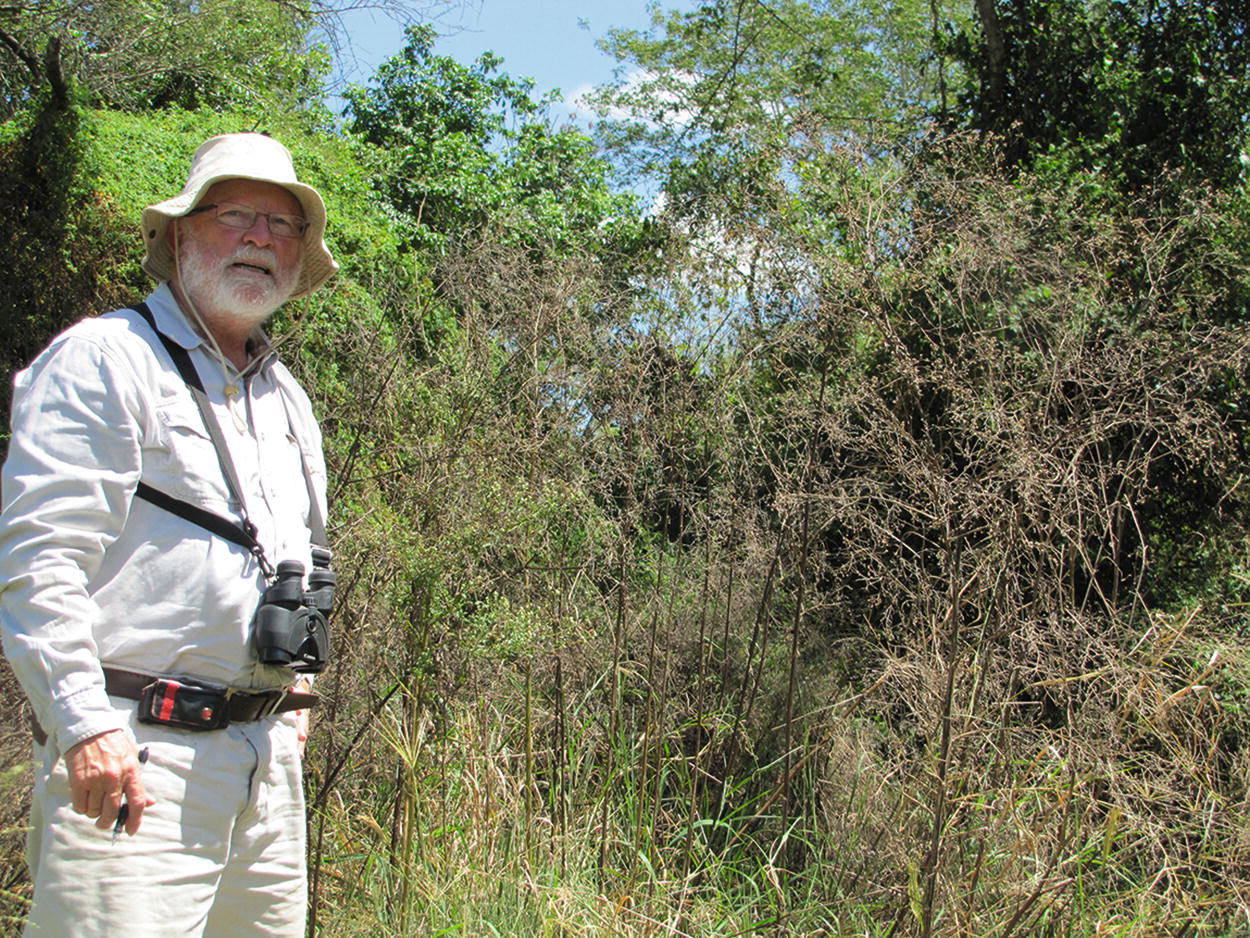
Dr Ian A.W. Macdonald , who played a leading role in the SCOPE project on the ecology of biological invasions and led the editing of South Africa’s first scientific review of the field. He is seen here on a more recent survey of invasive alien plants in KwaZulu-Natal . Photograph courtesy of Ian Macdonald
2.6 The NPER Sub-Programme on Invasive Biota in the CSIR (1982–1985)
Between 1972 and 1985, the CSIR implemented the National Programme for Ecosystem Research (NPER) to address a wide diversity of complex environmental problems that required a multi-organisational, interdisciplinary research approach (Huntley 1987). The programme, later administered by the CSIR’s Foundation for Research Development, provided unprecedented opportunities for cooperative ecological research in South Africa. The central goal of the programme was to develop a predictive understanding of the structure, functioning and dynamics of South African terrestrial and inland water ecosystems (Huntley 1987). A sub-programme, entitled “Invasive biota”, ran from 1982 to 1985 under the auspices on the NPER, resulting in five papers published in the peer-reviewed literature, and five reports, arising from 10 funded projects (Huntley 1987). Essentially, the NPER sub-programme on invasive biota was set up to co-ordinate South Africa’s contributions to the SCOPE project on the ecology of biological invasions, an undertaking that would require collaborative and multi-disciplinary approaches. The sub-programme was administered by Tony Ferrar of the CSIR, with substantial inputs from Ian Macdonald and others.
2.7 Research Conducted by the Scientific Services Division of South African National Parks (1987–Present)
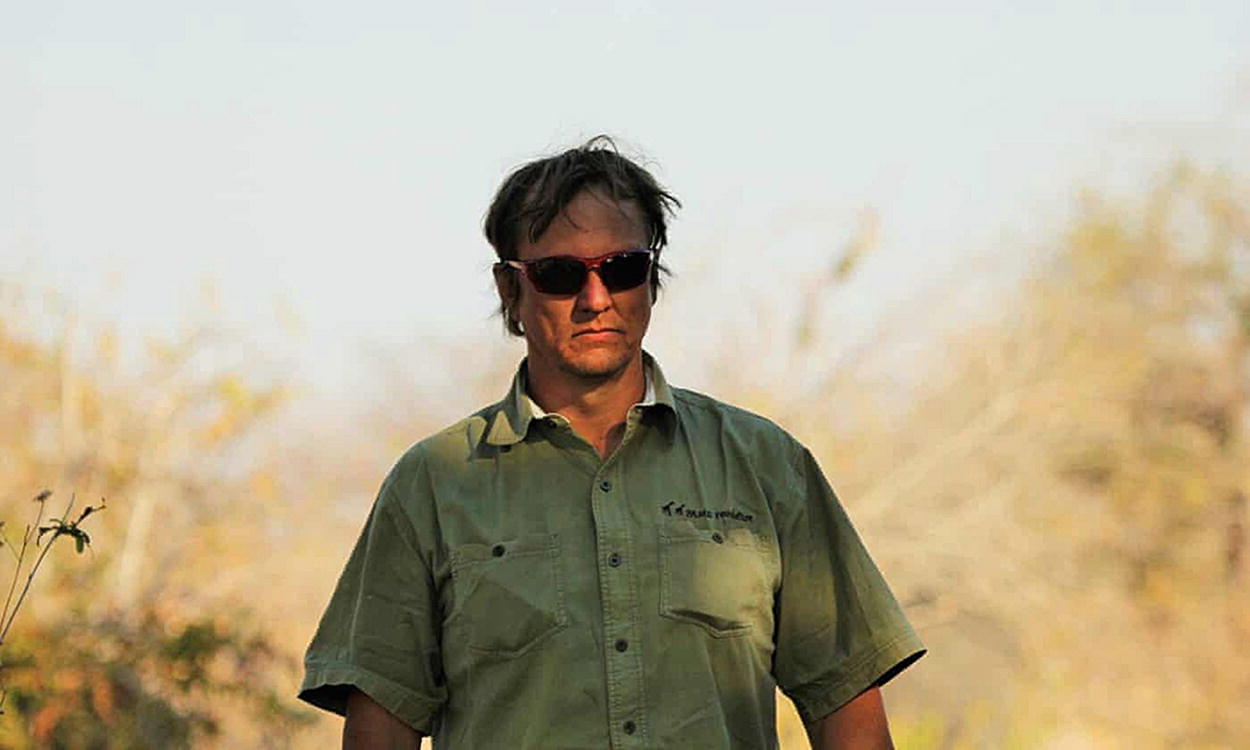
Wayne Lotter , who initiated some of the first scientific studies on alien plant control in the Kruger National Park . Photograph courtesy of Krissie Clark/PAMS Foundation
Lotter’s position at Scientific Services in the KNP was filled by Dr Llewellyn Foxcroft, at the time a PhD student of Richardson at the University of Cape Town. Foxcroft’s work has covered numerous aspects of invasion science (mainly focused on the KNP ), including documenting the history of management as well as the history of alien species introductions (e.g. Foxcroft and Freitag-Ronaldson 2007), developing systems for monitoring and control, and documenting the occurrence of alien species in protected areas globally ( Foxcroft et al. 2013).
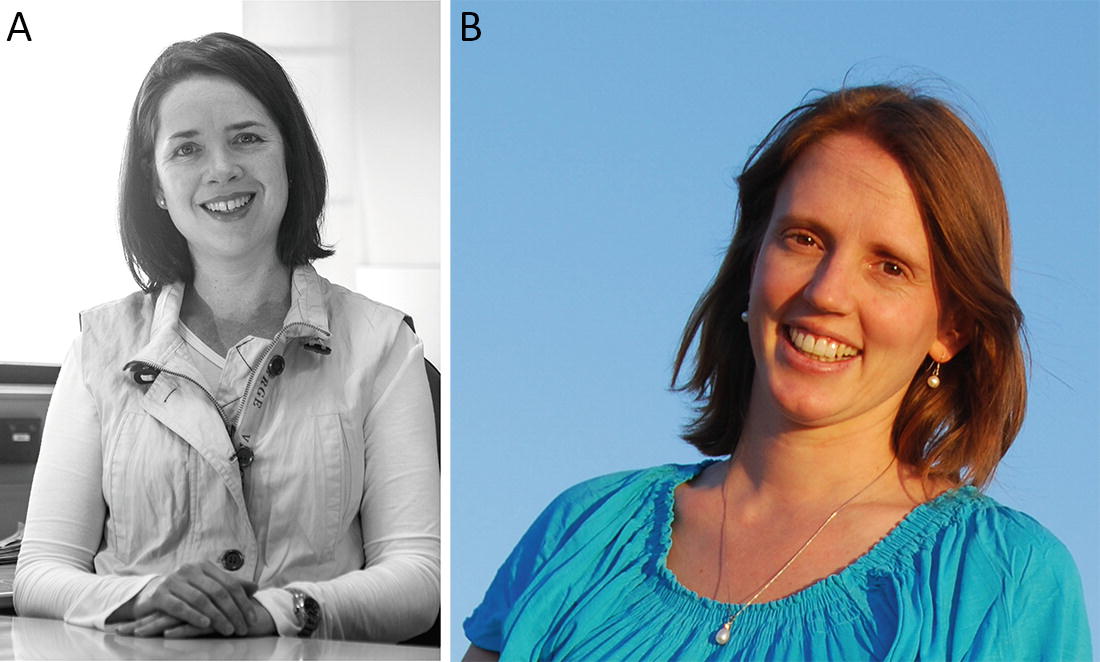
Melodie McGeoch (a) who was the first manager of South African National Parks’ Cape Research Centre, and who conceptualised the project that examined the impact of global change drivers (including invasions) on South Africa’s national parks. The report was completed by Nicola van Wilgen (b) after McGeoch had emigrated to Australia in 2012. Photographs courtesy of: (a) Melodie McGeoch ; (b) Nicola van Wilgen
2.8 Research on Alien Plant Invasions at the CSIR (1990–Present)
Researchers at the Jonkershoek Forestry Research Centre continued their work on invasive alien species after the transfer of the Centre to the CSIR. By 1994, research led by Brian van Wilgen and David Le Maitre (and based on afforestation experiments at Jonkershoek ) estimated that, if unchecked, alien plant invasions would potentially reduce water supplies to the city of Cape Town by 30% (Le Maitre et al. 1996). It was also estimated that more water could be delivered, at a lower unit cost, through the integration of alien plant control and the maintenance of water supply infrastructure (van Wilgen et al. 1996). This information was presented to Kader Asmal (the Minister of Water Affairs and Forestry) on 2 June 1995, and this in turn provided the rationale for the establishment of WfW (van Wilgen and Wannenburgh 2016).
Because invasive alien plant control is an expensive undertaking, it became important to investigate whether or not spending on control would deliver sufficient returns on investment. The CSIR team addressed these issues and conducted several pioneering economic studies. These studies demonstrated (1) that alien plant control could be effective and efficient, as the cost of water would be lower if delivered from catchments where alien plant control was in place, compared to catchments where no control was in place (van Wilgen et al. 1997); (2) that the highest returns on investment would be realised if mechanical and biological control of Acacia mearnsii (Black Wattle) was carried out in parallel with commercial growing activities (De Wit et al. 2001); and (3) that spending on biological control had delivered extremely attractive returns on investment in the case of several invasive plant species in South Africa (van Wilgen et al. 2004). Moran et al. (2013) noted that “[biological control] research efforts in South Africa have enjoyed increasing political and public credibility, at least in part because of the involvement of personnel from the South African Council for Scientific and Industrial Research who have shown that [biological control] is highly cost-effective and that it constitutes an essential supplement to other management practices”.
Work at the CSIR also sought to expand the understanding of the effects of invasive alien plants beyond their impacts on water at local scales. A team, including Brian van Wilgen, David Le Maitre , Belinda Reyers, Willem De Lange, Mark Gush and Sebinasi Dzikiti used plant distribution data, simulation models, and economic principles to scale up local studies to a national scale. They showed that (1) invasive alien plants would have serious consequences for water resources , rangeland productivity, and biodiversity on all of South Africa’s terrestrial biomes , if left to spread in an uncontrolled manner (van Wilgen et al. 2008); (2) that the value of ecosystem services currently being lost to invasive alien plants amounted to ZAR6.5 billion annually, and would continue to grow unless the invasions were contained (De Lange and van Wilgen 2010); and (3) that the combined impacts of invasive alien plants on surface water runoff in South Africa were between 1444 to 2444 million m3 per year, but that if no remedial action is taken, reductions in water resources could rise to between 2589 and 3153 million m3 per year, about 50% higher than estimated current reductions (Le Maitre et al. 2016). All of these studies strengthened the evidence base on the negative impacts of invasive alien species, which in turn made it possible to raise funding from the Department of Environmental Affairs for research and management (see also Le Maitre et al. 2020, Chap. 15; O’Connor and van Wilgen 2020, Chap. 16; Zengeya et al. 2020, Chap. 17).
Work at the CSIR, often in collaboration with others, also provided some of the first robust assessments of progress with alien plant control projects carried out under the auspices of WfW . In some cases, this work suggested that good progress was being made (Esler et al. 2010; De Lange and van Wilgen 2010; Impson et al. 2013), while other studies pointed to cause for serious concern, notably because control projects only reached a small proportion of the invaded area (van Wilgen et al. 2012b), and because implementation was sometimes not efficient (McConnachie et al. 2012 ). In response, the CSIR team made proposals for the prioritisation of alien plant control projects that would focus scarce funds on the most important areas (Forsyth et al. 2012) and facilitated cross-institutional debate on appropriate responses to management challenges (e.g. van Wilgen et al. 2012a).
2.9 Research on Biological Invasions at the Institute for Plant Conservation (1993–2004)
The Institute for Plant Conservation (IPC) was established at the University of Cape Town in 1993, through a generous endowment from Mr Leslie Hill. Prof. Richard Cowling led the Institute from 1993 to 2000, and he was followed as Director by Prof. Timm Hoffman in 2001. Richardson joined the IPC in 1993 and served as the Deputy Director from then until 2004. His research direction was primarily dictated by the strategic objectives of the IPC, and he managed two of the IPC’s five research programmes (“Invasive Plant Ecology” and “Disturbance and Restoration Ecology”).
Richardson used his time at the IPC to establish himself in the field of invasion science . In 1997, he was appointed as Editor-in-Chief of the Wiley journal Diversity and Distributions, a position he held until 2015; the journal included the ecology and biogeography of invasions as one of its focus areas. In 1998, he conceptualised, pulled together, and published (as sole editor) a multi-authored book on the ecology and biogeography of Pinus ( Richardson 1998). The production of this volume, involving 40 authors from nine countries, was a remarkable achievement when one considers the global economic importance of the genus, and the fact that the editor hailed from the southern tip of Africa, far removed from the natural range of pines. He was also involved in the supervision of 15 (masters and doctoral-level) post-graduate students, including Steve Higgins and Mathieu Rouget who themselves went on to publish important papers in the field of invasion science (e.g. Higgins et al. 2000; Rouget et al. 2004).
2.10 Research Funded by the Working for Water Programme (1995–Present)
The Working for Water programme (WfW, van Wilgen and Wannenburgh 2016), a public works project administered from within the Department of Water Affairs and Forestry (and later by the Department of Environmental Affairs ) has since its inception in 1995 allocated a proportion of its budget to research. This research has been carried out by a number of institutions, most notably the PPRI (for biological control), the CSIR (for research on hydrological and other impacts, and assessments of management effectiveness), and the Agricultural Research Council (for mapping invasive alien plants). Initially, the outputs of this research were presented in one annual research report (Department of Water Affairs and Forestry 2001), and one biennial research report (Department of Water Affairs and Forestry 2003). The titles “annual” and “biennial” indicated an intent to produce these reports on a regular basis, but this did not happen after 2003. Between the 19th and the 21st of August 2003, WfW then hosted its “inaugural” (the symposium has never been repeated) research symposium at Kirstenbosch in the Western Cape. The symposium brought together 290 participants, including researchers, students and managers, and provided an important forum for the exchange of ideas on invasion science . There were 40 verbal presentations and 14 posters, covering six broad themes (hydrology, ecology, biological control, operations management, social development, and economics; Macdonald 2004). The proceedings were published in a special issue of 18 research or review papers in the South African Journal of Science, with Brian van Wilgen as guest editor (van Wilgen 2004). After this initial flurry of transparent reporting of research activities and outputs, no further research reports have been produced. Nonetheless, it is clear that WfW’s funding has stimulated a lot of research into biological control, alien species impacts, the economics of invasions, and control methods (Abrahams et al. 2019).
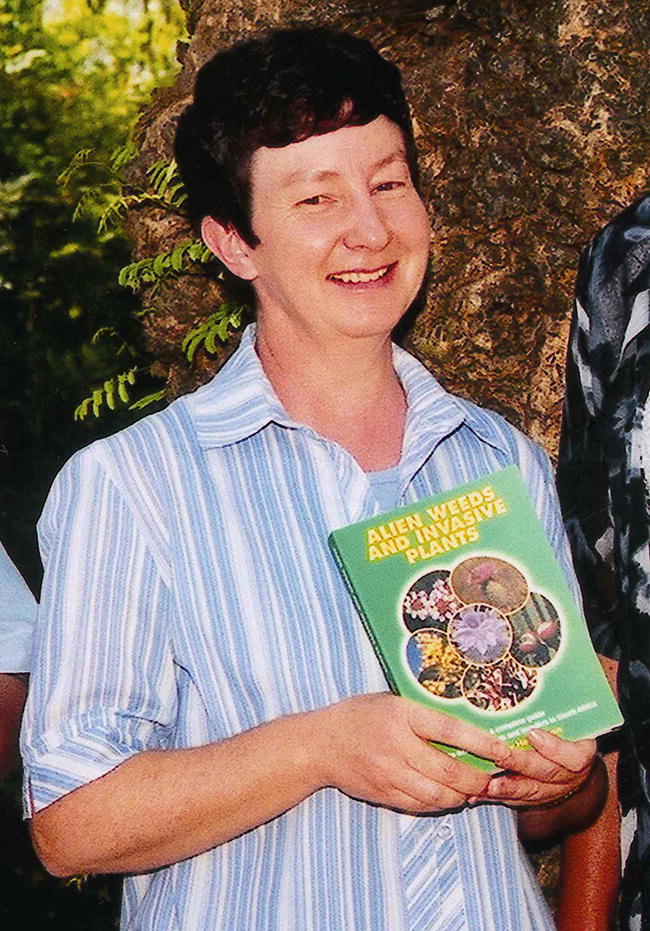
Lesley Henderson , who initiated the South African Plant Invaders Atlas (SAPIA ), and has maintained it for almost 40 years. Henderson is holding her book on invasive alien plant distributions in South Africa, which is based on SAPIA records. Photograph courtesy of Lesley Henderson
2.11 The DSI-NRF Centre of Excellence for Invasion Biology (2004–Present)
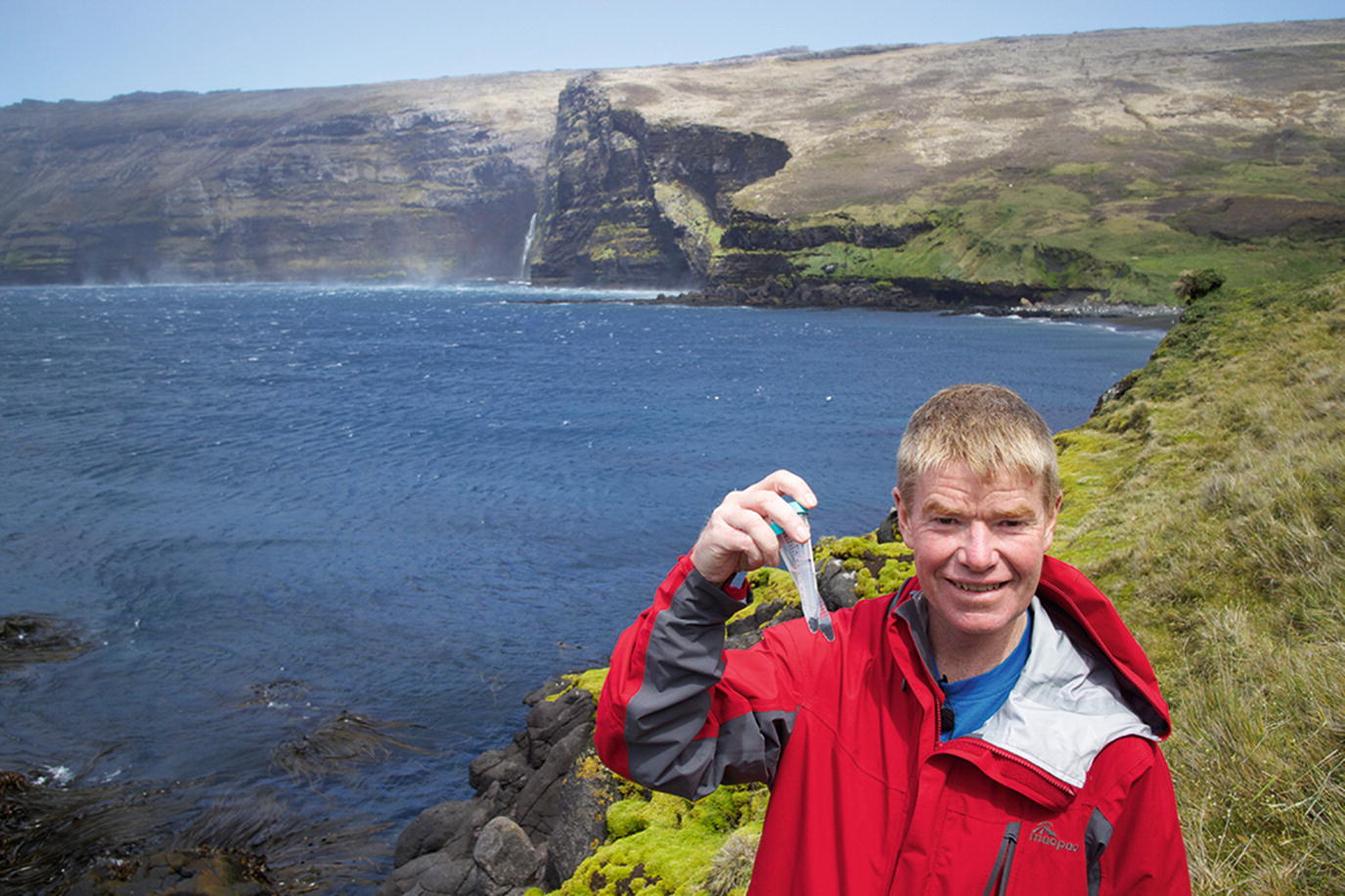
Prof. Steven L. Chown , founding director of the DSI-NRF Centre of Excellence for Invasion Biology , pictured here on a field collecting trip on Possession Island. Photograph courtesy of Charlene Janion-Scheepers
Prof. Steven Chown, Director of the C·I·B between 2004 and 2012, has a background in insect physiology, with a keen interest in Antarctic and sub-Antarctic research. He and many of his students worked on aspects of invasions in this region, and novel insights were generated under his leadership both on invasions and the ecosystems studied more generally. For example, Chown and Froneman (2008) published an overview of the structure, functioning and interactions of marine and terrestrial systems at the Prince Edward Islands . The overview demonstrated how global challenges (including climate change , biological invasions, and over-exploitation) are playing out at regional and local levels in the Southern Ocean. Chown left the C·I·B and emigrated to Australia in 2013, where he took up a position as head of the School of Biological Sciences at Monash University.
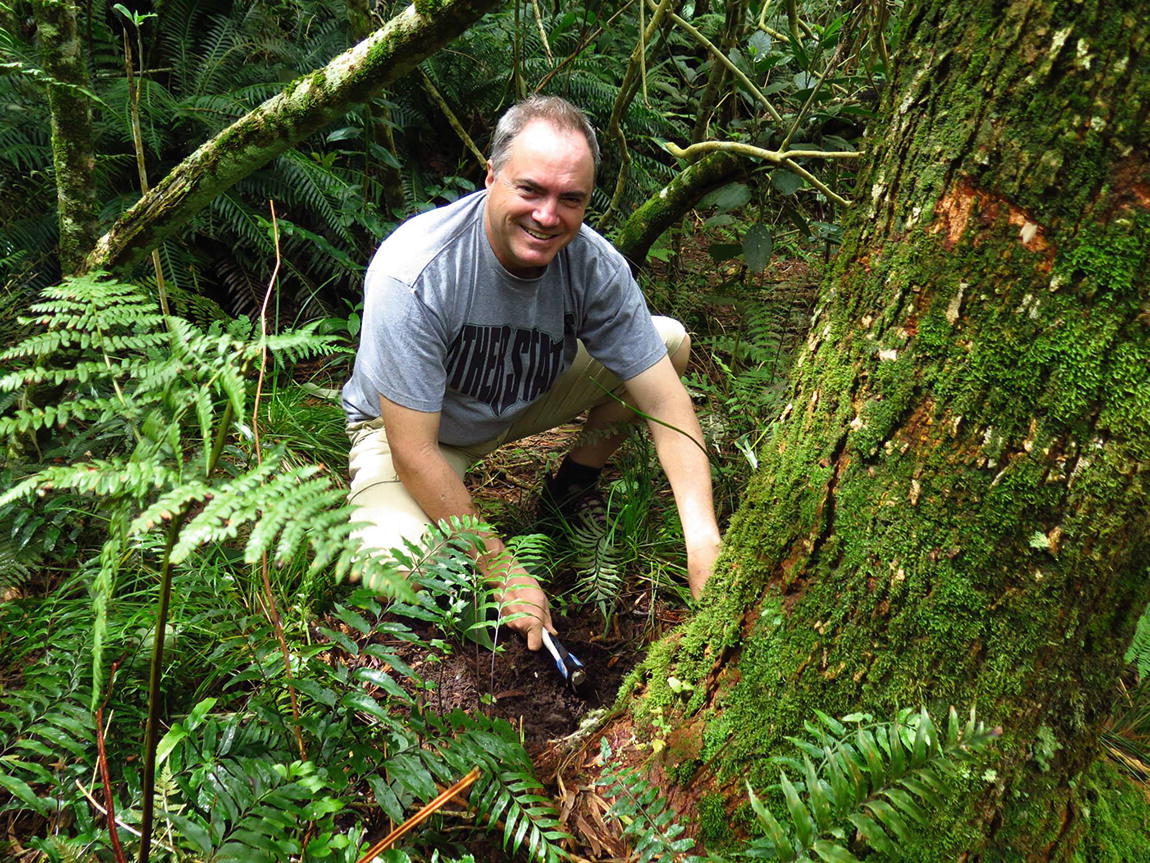
David M. Richardson , Director of the DSI-NRF Centre for Invasion Biology since 2011, who has made many important contributions to the development of invasion science nationally and internationally (seen here in the field on Reunion Island, Indian Ocean). Photograph courtesy of Jaco Le Roux
The C·I·B, led by Chown and Richardson , has boosted invasion science in South Africa through research outputs and human capacity development, and it is regarded as a model centre of excellence by its funders [for details see van Wilgen et al. (2014); Richardson et al. 2020, Chap. 30]. Between 2004 and 2018, the C·I·B generated over 1700 publications, which collectively have attracted over 42,000 citations with an h-index of 89 on Google Scholar as of mid-2019. During this period, 125 honours, 128 masters, and 64 doctoral degrees have been awarded to students based at the C·I·B, making an important contribution to building human capacity in the field of biological invasions. Although the C·I·B had a stated intention to carry out research into all aspects of invasion science (i.e. to go beyond biology and ecology, and to address history, sociology, economics and management), its strength has always been in basic and applied ecology. It deliberately avoided pursing research in the field of biological control, given the country’s existing strengths in this areas. For example, the original proposal for the establishment of the C·I·B ( Chown 2004) stated that “Some fields, such as biological control … are well-funded from other sources … and do not form the major focus of the work proposed here”. In addition, studies in the humanities have not featured strongly. The C·I·B has nonetheless emerged as a leading institute in the global field of invasion biology, with several unique features that differentiate it from similar research institutes elsewhere including a broad research focus leading to a diverse research program that has produced many integrated products; an extensive network of researchers with diverse interests, spread over a wide geographical range; and the production of policy- and management-relevant research products arising from the engaged nature of research conducted by the C∙I∙B.
2.12 Work on Biological Invasions at the South African National Biodiversity Institute (2008–Present)
In 2008, the Working for Water programme funded the establishment of a programme within the South African National Biodiversity Institute (SANBI) to work on biological invasions. Its goals were specifically to detect and document new invasions; provide reliable and transparent post-border risk assessments ; and provide the cross-institutional coordination needed to successfully implement national eradication plans (Wilson et al. 2013). SANBI’s work on biological invasions has since expanded to include the curation of data relevant to biological invasions and their management, the compilation of a national status report on biological invasions, and specific functions such as acting as the secretariat for the national annual symposium on biological invasions, and establishing and running a South African Alien Species Risk Analysis Review Panel (Kumschick et al. 2020; Chap. 20).
SANBI’s work was initially established and led by Philip Ivey (now at the Centre for Biological Control) and, as it developed into a full directorate within SANBI, led by Dr. Sebataolo Rahlao (a C∙I∙B graduate). Scientific guidance was provided throughout by Prof. John R. Wilson (a SANBI employee and a former C·I·B post-doctoral researcher). Wilson has a PhD from Imperial College, London, UK, based on work on the biological control of aquatic plants, and he has broad interests in the ecology and management of biological invasions. He is based at the C·I·B at Stellenbosch University, a move intended to facilitate collaboration between SANBI, academic researchers, and students. SANBI’s Biological Invasions Directorate funds postgraduate projects to work on particular species or taxa, and has produced an increasing number of papers.
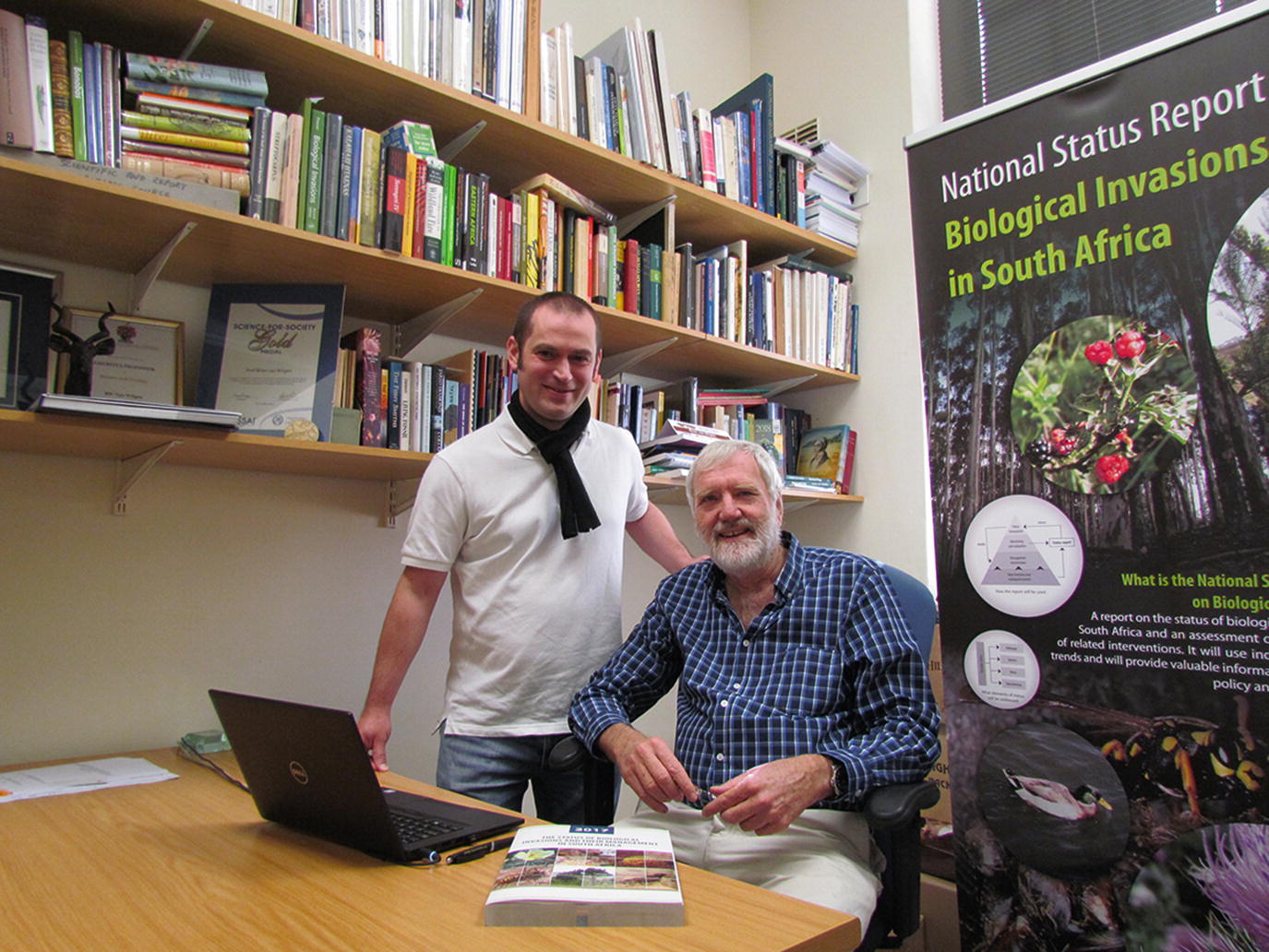
John R. Wilson and Brian W. van Wilgen with South Africa’s (and the world’s) first status report on biological invasions at a national level. Photograph courtesy of Wiida Fourie-Basson
2.13 Social and Historical Studies Relevant to Invasion Science
The development of invasion science in South Africa has been dominated by ecologists, with relatively few contributions from the humanities. For example, a review of 364 papers that specifically mentioned the Working for Water (WfW ) programme as a funder of the research, or where it was a topic of the paper, concluded that “research produced under the auspices of WfW is authored by a handful of core researchers, conducting primarily ecologically-focused research, with social research significantly underrepresented” (Abrahams et al. 2019). There have nonetheless been some studies that provide non-ecological perspectives.
A few studies have shown that a great deal of effort often went into the selection and spreading of alien species that subsequently became invasive (see also Faulkner et al. 2020; Chap. 12). Gwen Shaughnessy (1980) provided a detailed documentation of the factors that led to the introduction, widespread dissemination and further spread of 13 woody alien species in the Cape Town area in the 1800s. Trees and shrubs in the genera Acacia, Hakea, Leptospermum, Paraserianthes and Pinus were introduced for display in botanical gardens, for sand stabilisation, climatic amelioration and economic gain. The government programs to establish these species were considerable, often involving the removal of native vegetation, ploughing, digging of pits and ridging of the soil. In addition, government supplied “massive” quantities of seeds to private landowners. Government plantations were later abandoned, leaving large areas dominated by alien species. Shaughnessy’s study is a rare example of the meticulous historical documentation of the processes that led to the establishment of invasive alien species. Brett Bennett has documented what he termed a “globally unique and ultimately successful research programme” in which South African foresters used climate matching to select candidate alien trees for introduction, and then tested them in experimental plantings across South Africa to select candidates to grow commercially (Bennett 2011). While this led to the successful establishment of plantation forestry in South Africa, the species themselves often became invasive, not surprisingly given the care taken to match them to local conditions. These invasions led to changing views about the forest industry (see, for example, Johns 1993; Cellier 1994), and Bennett (2011) concludes that “the currently popular anti-exotic rhetoric of many South Africans is at odds with the contribution of plantations and timber products to South Africa’s economy and the more nuanced scientific findings about biological invasion held by the scientific community”.
Van Sittert (2002) documented in graphic detail the devastations to communities and to their social structures, from 1870–1910, through the invasions of Opuntia ficus-indica which at that time densely covered nearly 1 million hectares of land in the Karoo Biome of the Eastern Cape . The distribution of the plant was subsequently reduced to about 10% of its original range through biological control that was initiated in 1932 (Pettey 1948; Annecke and Moran 1978). These stark historical perspectives are often overlooked or ignored in present-day commentaries (see also Hill et al. 2020, Sect. 19.3 in Chap. 19). In a detailed social analysis of the control of O. ficus-indica, Beinart and Wotshela (2011) maintain that while control of this plant has been beneficial for native biodiversity, it has had major costs for poor rural people, who no longer can benefit from prickly pears for fruit. They conclude that the value of useful invasive plants such as prickly pear should be given greater weight in comparison to their environmental costs. This is also in line with the view that local benefits are often underestimated when assessing the costs of invasive or alien species (Shackleton et al. 2007). Beinart (2014) also discusses the case of Acacia mearnsii in South Africa, and notes that black wattle is one of the few species for which a systematic cost benefit analysis has been attempted (De Wit et al. 2001). Despite this, Beinart remains sceptical about De Wit et al.’s conclusions, arguing that the social costs of removing a useful species had not been adequately estimated.
2.14 Discussion
Several assessments have indicated that, for a relatively small country, South Africa has made a disproportionate contribution to the development of invasion science . The country has been a pioneer in the field of invasive alien plant biological control and is currently among the leaders, or may even have assumed the mantle of leadership (Moran and Hoffmann 2015; Schwarzländer et al. 2018). Currently, South Africa is one of two countries where the practice of invasive alien plant biological control is thriving (the other being New Zealand; Moran and Hoffmann 2015). South Africa’s role in initiating and participating in the SCOPE project on biological invasions in the 1980s helped both to develop invasion science in the country and to cement the country’s position as a leader in the field. The establishment and sustained funding of a Centre of Excellence on biological invasions has similarly contributed to a substantial expansion in understanding and has enabled the training of a new cohort of scientists. Richardson et al. (2004) reported on a historic four-day summit on “Invasive plants in natural and managed systems: Linking science and management” held in Fort Lauderdale, Florida, and attended by over 700 delegates. They noted that “there were numerous references in many sessions to South Africa’s substantial and innovative contributions in the field” and that “there is no doubt that the small scientific community in South Africa has made its mark”. Another important indicator is contributions to the biennial EMAPi (Ecology and Management of Alien Plant invasions) conferences (Pyšek et al. 2020). A total of 1696 individual delegates from 77 countries attended one or more of the 14 EMAPi conferences held between 1992 and 2017. Of these, only six countries (the USA, South Africa, Australia, the Czech Republic, Germany and the UK, in that order) were represented by over 100 delegates. If one does not count attendance from host countries, then the Czech Republic with 109 participants was most active, followed by South Africa, the USA, Germany and the UK. Pyšek et al. (2006) provide an analysis of the most cited (i.e. influential) papers in invasion ecology. The majority (70%) of well-cited papers were from the USA, but South Africa was second with 9% of the most cited papers, followed by Australia and the UK with 6% each, the Czech Republic, France and Canada with 3%. Pyšek et al. (2008) noted that invasion science was poorly studied in Africa, with the notable exception of South Africa, “which alone accounts for two-thirds of research effort on this continent”. Finally, the existence of Working for Water, arguably Africa’s largest and best-funded conservation program, and with a focus on biological invasions, has provided a host of implementation problems that needed evidence-based solutions, thus providing a stimulus for further research.
Some authors have put forward the idea that South Africa’s relative prominence in the field of invasion science has its roots in apartheid philosophies, and that it is similar in some ways to Nazi Germany’s proclivity for the nature garden (Peretti 1998; Comaroff and Comaroff 2001). For example, Peretti 1998 stated that “Like Nazism, apartheid thinking is concerned with separating the pure from the impure. Even anti-racist scientists living in an apartheid culture may be influenced by this sort of purist xenophobic, and racist way of thinking. It is not surprising that SCOPE’S hard- line biological nativism has roots in South Africa”. While it is impossible to prove that certain perceptions are not underlain by racism or xenophobia , invasion biologists and conservationists worldwide have a clear focus on preventing ecological or economic harm, and attempts to impute baser motives are unconvincing (Simberloff 2003). Simberloff (2003) notes further that “Claims that modern introduced species activity targets all introduced species, not just invasive ones, and neglects benefits of certain introduced species have no basis in fact”. South Africa is no different in this regard, and as the history shows, South African research has sought to identify and quantify both harm and benefits, and to find optimal solutions to what is a large and growing environmental issue.
It could also be asked whether South Africa’s participation in international programmes led to developments or understanding that would otherwise not have been the case. Certainly, international collaboration was strongly encouraged by the National Programme for Ecosystem Research (Huntley 1987), for the very reason that it would inject new thinking and fresh ideas. This was strongly followed by most of South African’s ecological research community (with the notable exception of South African National Parks , who pursued inwardly-focussed research through most of the 1960s to the early 1990s, Carruthers 2017). However, attempts to collaborate internationally were also resisted by many foreign scientists opposed to the then South African government’s apartheid policies, and academic boycotts began in the 1970s and strengthened until the early 1990s. While there were undoubtedly benefits that arose from collaboration in the SCOPE programme, the differences between the situation that existed in the mid-1990s and the counterfactual situation that would have existed with no international collaboration are not immediately obvious.
A number of factors have probably contributed to South Africa’s ability to make a disproportionate contribution to the development of invasion science . First, South Africa is one of the most biodiverse countries in the world, with a wide variety of terrestrial, freshwater and marine ecosystems . This diversity, combined with the fact that invasions affect all of these ecosystems and pose real problems, has provided a rich template on which to carry out research, test ideas, and develop management solutions. Secondly, South Africa’s research community has been relatively small, and well connected. This, combined with the deliberate strategies that were adopted, from the 1970s onwards, to encourage multi-disciplinary, collaborative research, have meant that people got to know each other, and to share ideas, in an environment that encouraged collaboration. Often, lasting friendships developed between like-minded researchers that led to increased scientific productivity. In the case of invasion science in South Africa, we may have an example of the Goldilocks Principle, which holds that something must fall within certain margins, as opposed to reaching extremes. Most developing countries do not have sufficient resources that would allow them to build a critical mass of researchers that could go on and make a broad and meaningful contribution. On the other hand, developed countries may have relatively too much, and collaborative approaches would become less necessary because different research groups could operate independently. A proper examination of this hypothesis would make an interesting research project in itself.
I thank the DSI-NRF Centre for Invasion Biology and the South African National Research Foundation (Grant 109467) for support. I am grateful to Jane Carruthers, Ian Macdonald and Cliff Moran who provided constructive and helpful reviews of an earlier draft of this chapter. David Richardson assisted with the identification of important papers cited in this review.

Open Access This chapter is licensed under the terms of the Creative Commons Attribution 4.0 International License (http://creativecommons.org/licenses/by/4.0/), which permits use, sharing, adaptation, distribution and reproduction in any medium or format, as long as you give appropriate credit to the original author(s) and the source, provide a link to the Creative Commons license and indicate if changes were made.
The images or other third party material in this chapter are included in the chapter's Creative Commons license, unless indicated otherwise in a credit line to the material. If material is not included in the chapter's Creative Commons license and your intended use is not permitted by statutory regulation or exceeds the permitted use, you will need to obtain permission directly from the copyright holder.